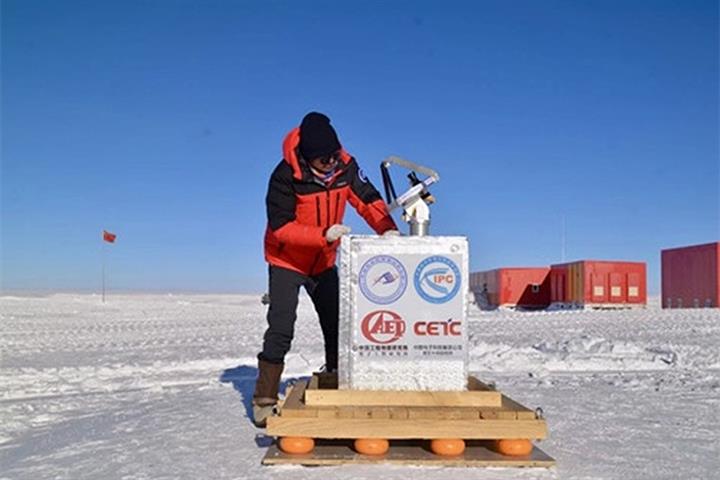 China Tests Its Homegrown Terahertz Detection Devices at South Pole
China Tests Its Homegrown Terahertz Detection Devices at South Pole(Yicai Global) March 13 -- Chinese scientists have been testing the country’s self-developed detection equipment for terahertz waves, which are a key portion of the electromagnetic spectrum used in astronomical observations, in the extreme conditions of Antarctica for the first time.
Scientists from the Purple Mountain Observatory joined the country’s 39th scientific expedition to the South Pole, which set sail in October last year, carrying with them key devices such as superconducting terahertz receivers, terahertz signal sources, cryogenic coolers as well as small high-precision antennae, the Nanjing, eastern Jiangsu province-based observatory said in a press release today.
The team conducted trial astronomical observations using the terahertz equipment and carried out experiments involving the sending and receiving of communication signals at the Kunlun and Taishan Research Stations, two of China’s four research stations in Antarctica, the report said.
Terahertz detectors are devices that convert signals from electromagnetic waves with wave lengths ranging from 3,000 micrometers to 30 micrometers into a measurable electrical signal to understand how terahertz radiation interacts with physical matter. The technology is widely applied in radars, remote-sensing data communication and transmission, monitoring of the atmosphere and environment as well as in medical diagnosis.
Through these experiments, the scientists will be able improve the observatory’s measurement results using terahertz equipment, which will be of great significance to future astronomical observations made with these devices in the Antarctic, the report said.
The team, who are now on their way back to China on a polar research vessel, were also able to send and receive terahertz signals with the kilometer-level 0.5 THz frequency range on the Antarctic continent for the first time, laying the foundation for the research and testing of the next generation of communications technologies at the South Pole.
Editor: Kim Taylor